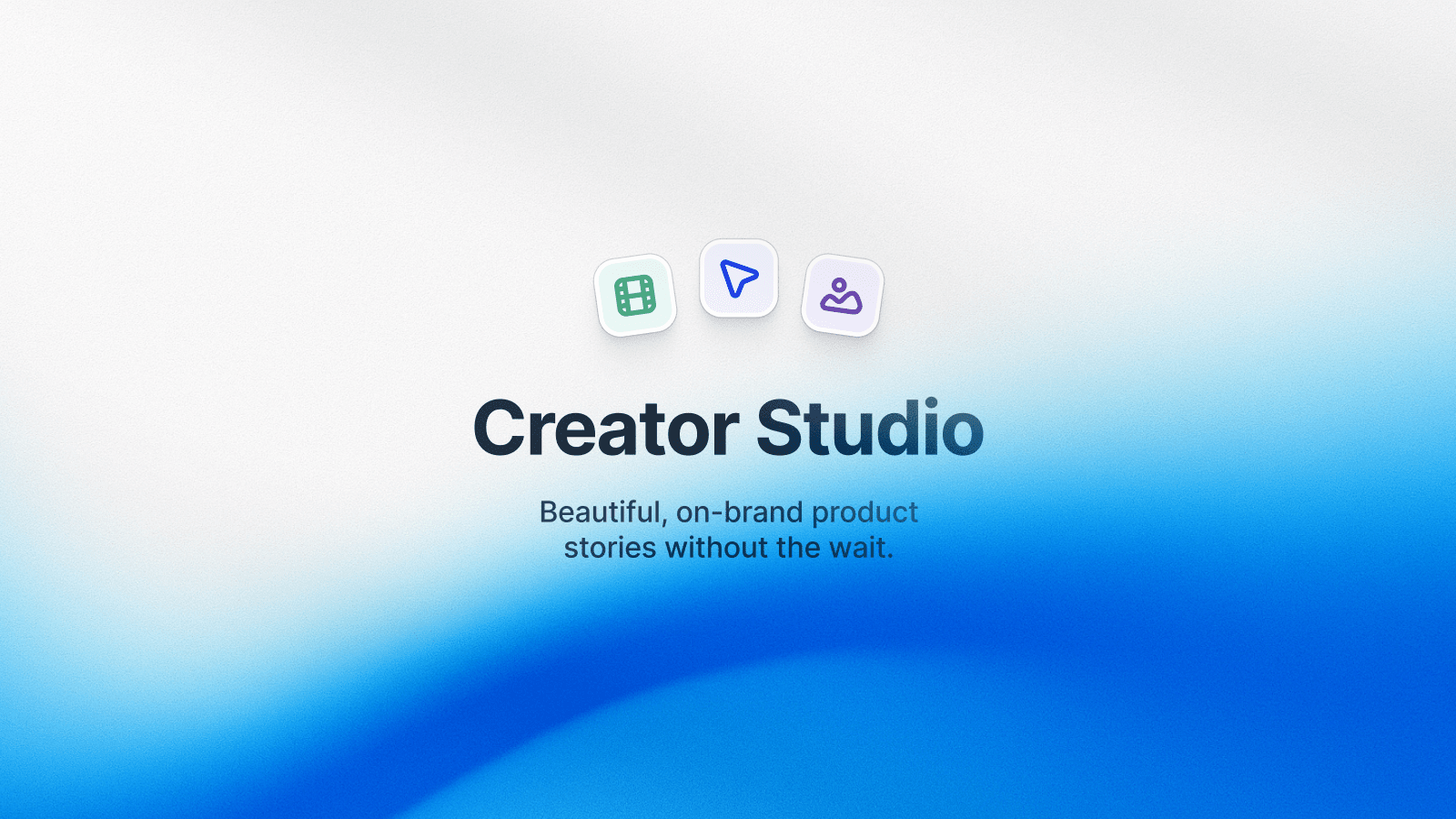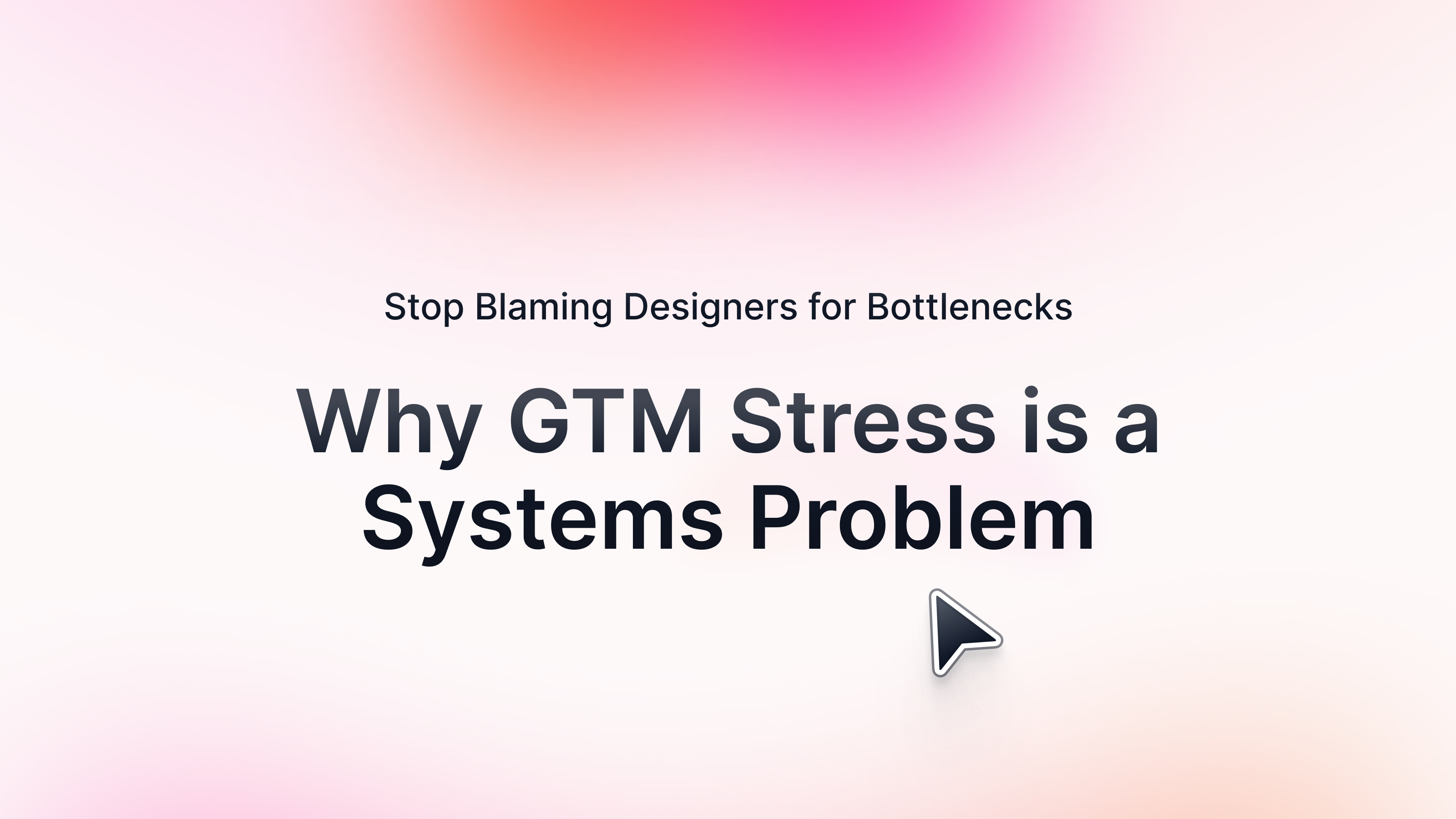TL;DR: Enterprise GTM is evolving from pure persuasion to active participation. Tried-and-true practices from the world of PLG (Product-Led Growth) can help offer a blueprint.
- Build content that evolves along with your product. Use AI to accelerate creation and optimization while maintaining human-led craft and control.
- Prioritize clarity over complexity. Let your product experience do the explaining.
- Treat every product story as a living asset. Keep content fresh, versioned, and data-informed.
- Unite product, marketing, and sales. Shared insights and iterative storytelling drive alignment and growth.
- Adopt PLG principles, not just tactics. Fast, iterative, and experience-led motions are the new foundation of enterprise GTM.
How “Show, don’t tell” Became Tablestakes
This timeless advice for storytellers – “Show, don’t tell” – is now a business imperative.
Enterprise GTM (Go-to-Market) teams are discovering what creators have known all along: attention is earned through experience, not explanation. Buyers don’t want another pitch deck or product promise. They want proof, and they want it right out of the gate.
According to G2’s 2024 Buyer Behavior Report, nearly 7 in 10 buyers prefer to self-serve through most of the buying process, and typically engage a salesperson only after they’ve made their decision. A 2023 survey from 6sense found today’s buyers avoid engaging directly with a seller until they’re approximately 70%of the way through the process.
Today’s enterprise buyer wants the chance to explore a product on their own, not deliberately walked through until the timing is right. They expect to discover value for themselves instead of having someone to tell them about it. This shift toward self-service has redefined even the most complex buying motions. And meanwhile, AI has flooded every channel with copy-paste content, making originality and authenticity the new differentiators.
Product-led Growth (PLG) companies understood this early and built their motion around a simple truth: your product is your strongest marketing asset. The more you let buyers experience it firsthand, the faster they believe, convert, and advocate.
Now, enterprise GTM teams are catching up, translating the “show, don’t tell” mindset into scalable, cross-functional marketing and sales strategies. The future of enterprise growth belongs to teams that make every interaction feel like a story-led product experience instead of a traditional sales pitch.
What Product-led Growth Gets Right
At its core, Product-led Growth – a term first coined in the mid 2010’s – flipped the traditional GTM motion on its head. Instead of relying on marketing campaigns or sales scripts to convince buyers, PLG teams essentially let the product prove itself.
These teams designed every touchpoint around three simple-yet-radical principles:
- Frictionless exploration
PLG companies made it effortless for buyers to get hands-on. There’s no heavy lift or wait time – just immediate access to value. Every sign-up, free trial, or self-guided demo is an invitation to experience the product’s impact firsthand.
The product becomes the pitch.
- Data-driven storytelling
Every click, skip, and share becomes a feedback loop. PLG teams didn’t have to guess what resonated because the data told them. Product usage drove messaging refinement, and turned to insights to drive better alignment across product, marketing, and sales.
The story evolves as the customer does.
- Iterative growth
PLG teams shipped fast, learned faster, and treated every release as a chance to iterate and improve. They understood that growth comes from a continuous cycle of experimentation and optimization.
The goal isn’t perfection – it’s progress.
Ultimately, PLG became a case study for how sustainable growth can come from removing friction instead of simply applying more pressure. By showing the product’s value upfront, you earn trust earlier and scale faster.
Why Enterprise GTM Needs PLG Principles Now More Than Ever
The enterprise buying process has fundamentally changed. It’s no longer linear, but dynamic, decentralized, and driven by the buyer.
Decision-makers want to explore on-demand, share insights internally, and make decisions asynchronously, expecting instant clarity, personalized context, and tangible proof before a single call gets scheduled. And yet, most enterprise GTM teams are still operating with workflows designed for a slower era.
Three big blockers enterprise GTM teams face today:
- Creating beautiful content quickly is hard. Most teams still rely on agencies or already-stretched design resources, which slows execution and limits iteration.
- AI-generated content often looks like slop. While it saves time in theory, in practice it creates more editing cycles and undermines brand credibility.
- The product evolves, but the content can’t keep up. Demos, decks, videos, and one-pagers go stale within a sprint, forcing teams into constant cycles of rework.
The irony is that while enterprise GTM teams have some of the best product stories to tell, rigid workflows make it hard to tell them well.
The PLG approach, however, offers a way out. It’s a model built for speed, iteration, and shared ownership that shows what it looks like to operationalize “show, don’t tell” at scale.
Lessons from PLG that Enterprise GTM Can (and Should) Apply
If Product-led Growth is the underlying philosophy, these are the practices that bring it to life. Enterprise teams don’t need to overhaul their entire GTM motion overnight – they just need to start adopting the principles that make PLG work well: speed, simplicity, iteration, and alignment.
Lesson 1: Build content that moves as fast as your product
PLG mindset: Ship early, learn fast.
PLG teams don’t wait for perfection. They launch, measure, and iterate — turning speed into a competitive advantage.
Enterprise challenge: Static content pipelines can’t keep pace with modern product cycles.
By the time a campaign launches, the story has already changed.
The opportunity: Rethink the creation process.
Use new tools and workflows to shorten the gap between idea and execution — whether that’s through AI-assisted drafting, modular content systems, or collaborative review processes. The goal isn’t just to produce faster; it’s to adapt faster.
Lesson 2: Prioritize clarity over complexity
PLG mindset: Simple, intuitive onboarding builds trust.
The most effective PLG teams make discovery effortless — every touchpoint helps the user find value faster.
Enterprise trap: Layers of messaging and “corporate-speak” bury the story in abstraction.
Too many voices and approvals dilute the core message until it’s lost.
The opportunity: Lead with clarity.
Replace jargon with plain language, and reframe “explainers” as experiences. Use tools that make your story visual, hands-on, and easy to digest for every persona. The clearer the story, the shorter the sales cycle.
Lesson 3: Treat every product story as a living asset
PLG mindset: Everything is iterative — launch, learn, improve.
Growth happens through continuous feedback and evolution.
Enterprise trap: One-time demo builds and static decks go stale within a sprint.
Without a process for updating content, teams are forced to choose between speed and accuracy.
The opportunity: Build for iteration.
Adopt systems that make it easy to update and measure performance in real time. Whether through engagement data, version control, or automated content checks, keep your storytelling in sync with your product roadmap. Think of your product story like your product itself — always in beta, always improving.
Lesson 4: Bring product, marketing, and sales onto the same canvas
PLG mindset: Growth is cross-functional by design.
In PLG organizations, everyone contributes to the same user experience — product, marketing, and sales share the same story.
Enterprise reality: Most GTM teams still operate on disconnected tools, timelines, and feedback loops.
That fragmentation slows storytelling and blurs accountability.
The opportunity: Build shared visibility.
Give every team access to the same insights, data, and narrative framework. When GTM, product, and enablement work from a unified source of truth, storytelling becomes faster, smarter, and far more consistent. Alignment isn’t a meeting — it’s a system.
How to Apply PLG Principles for Enterprise GTM
You don’t need to rebuild your entire go-to-market engine to think like a Product-Led Growth company. Start small, move fast, and scale what works. The key is to adopt the mindset before the motion — to treat every product story like a living, evolving experience.
Here’s where to begin:
- Pilot an interactive product story: Start with one high-impact asset – a hero demo, onboarding flow, or feature walkthrough – and make it interactive. Give buyers the chance to explore your product’s value firsthand. You’ll learn quickly what resonates, what’s missing, and what converts.
- Layer in AI, responsibly: Use AI to speed up production, but not to replace human perspective. Let it handle the heavy lifting – first drafts, visual concepts, or copy variations – so your team can focus on nuance, storytelling, and brand voice.
- Track engagement like PLG teams do: Treat engagement data as feedback, not just a metric. Track how buyers interact with your content – where they click, how long they stay, what they skip – and use those insights to sharpen your story with every iteration.
- Build update workflows into your GTM rhythm: Stop tying content refreshes to campaign launches. Instead, align them with product releases or roadmap milestones. That way, your storytelling evolves alongside your product instead of months behind it.
- Unite product, PMM, and enablement: Treat storytelling as shared infrastructure, not a one-off function. When every team contributes to the same narrative framework, you reduce duplication, build consistency, and accelerate feedback loops across the buyer journey.
The more enterprise GTM teams operate like PLG companies – fast, iterative, and data-driven – the closer they get to true buyer alignment.
Experience is the New Enterprise Growth Engine
Product-Led Growth proved one thing: when buyers can experience your product story, they remember it, share it, and believe it.
Today’s reality is clear:
- AI has raised the bar for faster content creation.
- Buyers expect value at the first click — not the fifth follow-up.
- The best enterprise teams are pairing speed with taste, craft, creativity, and control.
The future of enterprise GTM isn’t about producing more content – it’s about creating better experiences that show instead of tell. The next era of growth won’t be driven by louder messaging, but by teams who let their future customers explore their products’ value first hand.
If you’re looking to rethink how your product story shows up for buyers, get in touch with our in-house experts and see how leading GTM teams are building interactive, product-led experiences that convert faster and stay fresh longer.
Frequently Asked Questions
What is Product-Led Growth (PLG)?
Product-Led Growth is a go-to-market strategy that uses the product experience itself as the primary driver of acquisition, activation, and retention. Instead of leading with messaging or sales decks, PLG companies let buyers explore the product early and build trust through direct experience.
Why should enterprise GTM teams care about PLG?
Enterprise buying behavior has changed. Decision-makers expect to self-educate, test products firsthand, and make faster, data-backed decisions. Adopting PLG principles helps enterprise teams meet those expectations while improving efficiency and buyer trust.
How can AI support PLG principles in enterprise GTM?
AI helps enterprise teams create and update content quickly, surface insights from engagement data, and personalize storytelling at scale. When used responsibly, it accelerates iteration without sacrificing brand or quality.
What challenges do enterprise teams face when applying PLG principles?
Large organizations often struggle with slow content cycles, disconnected tools, and inconsistent storytelling. The key is to start small—pilot interactive or product-based experiences, measure engagement, and expand successful models across functions.
What does “show, don’t tell” mean in a GTM context?
It means replacing static explanations with immersive, visual, and interactive ways for buyers to experience value. In enterprise GTM, “show, don’t tell” looks like hands-on product tours, personalized demos, and content that evolves alongside the product.
How can enterprise GTM teams get started with PLG?
- Identify a high-impact part of the buyer journey where product experience can replace explanation.
- Build a lightweight, interactive version of that experience.
- Track engagement data to learn what resonates.
- Use those insights to refine messaging and scale to new touchpoints.





.jpg)


